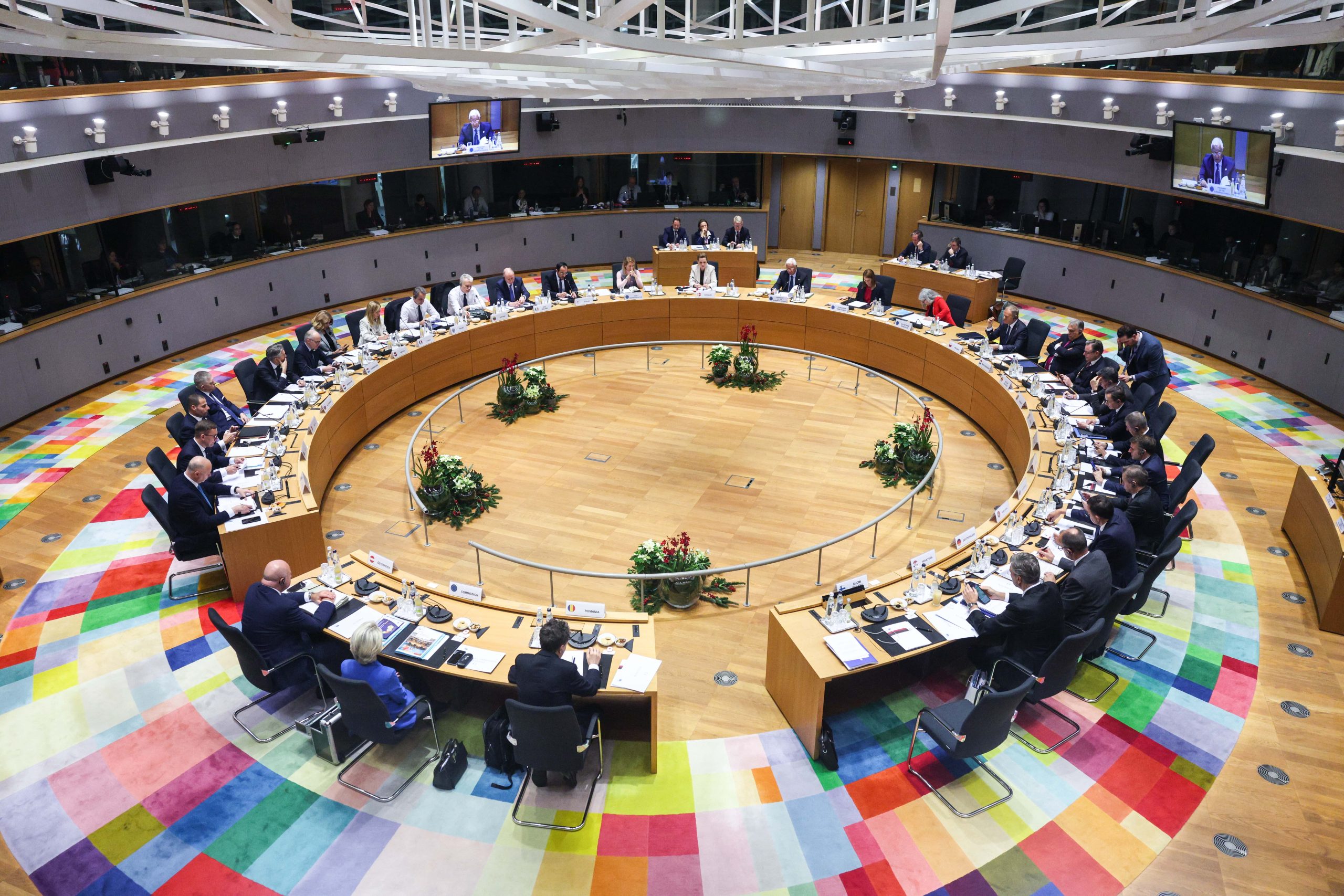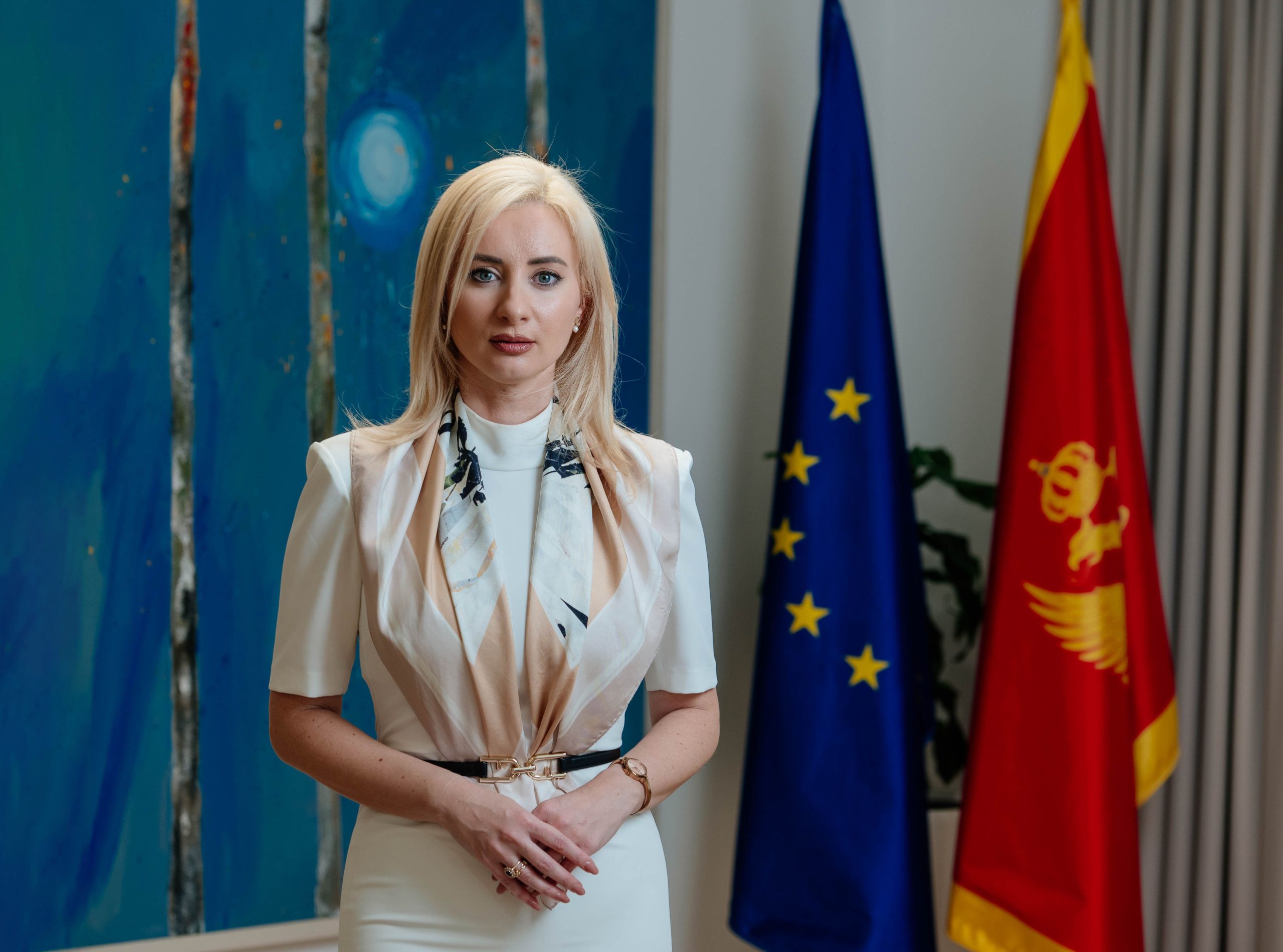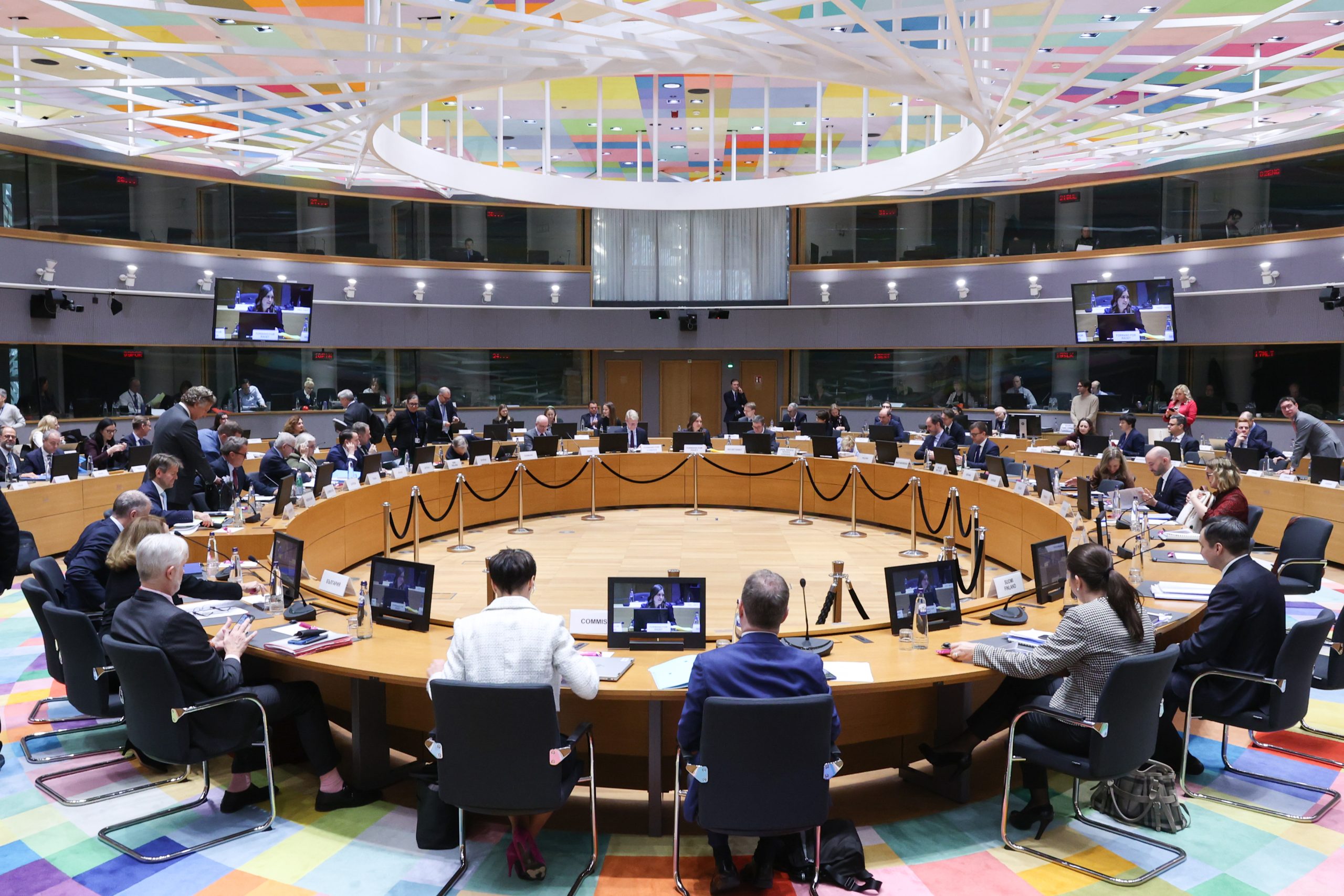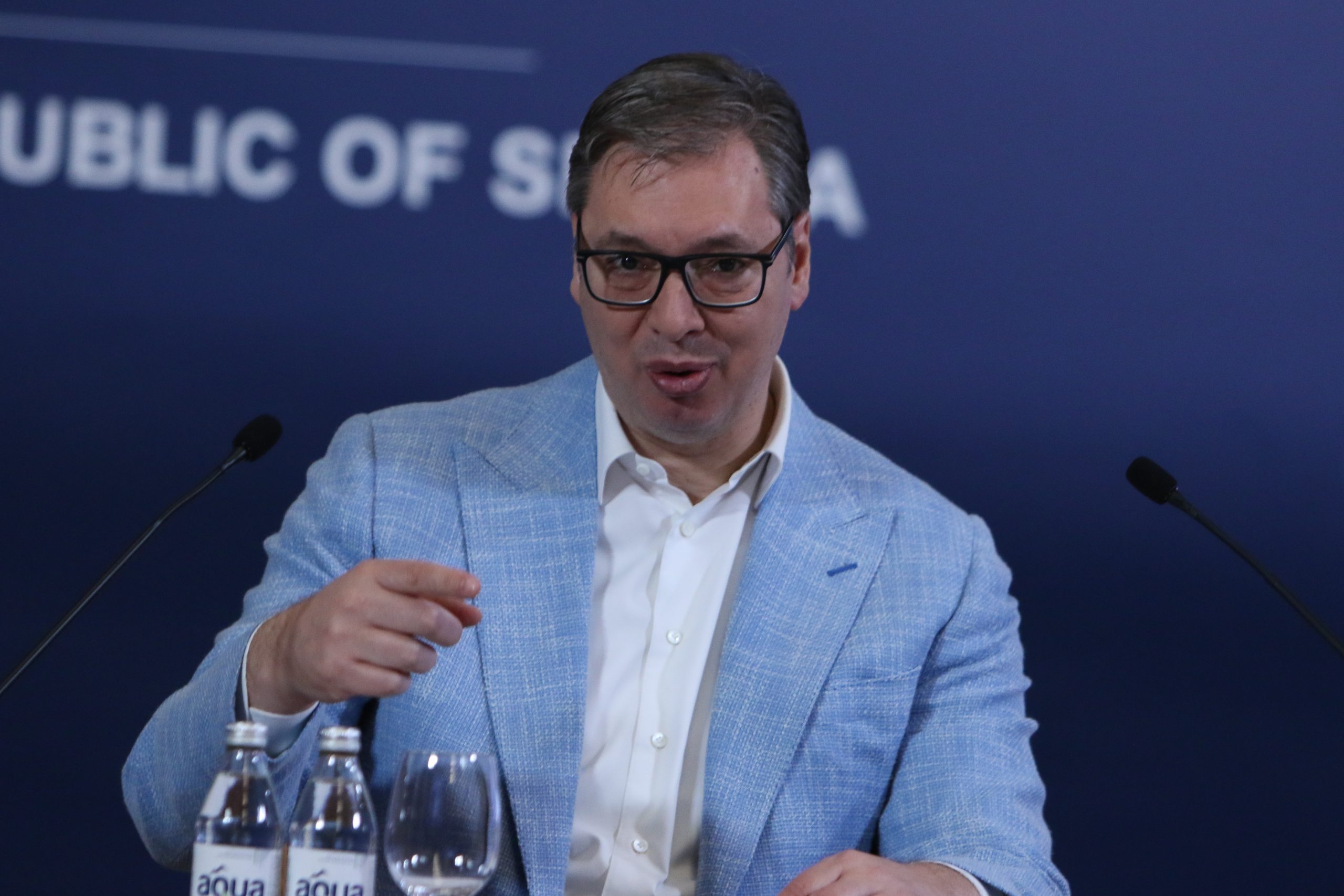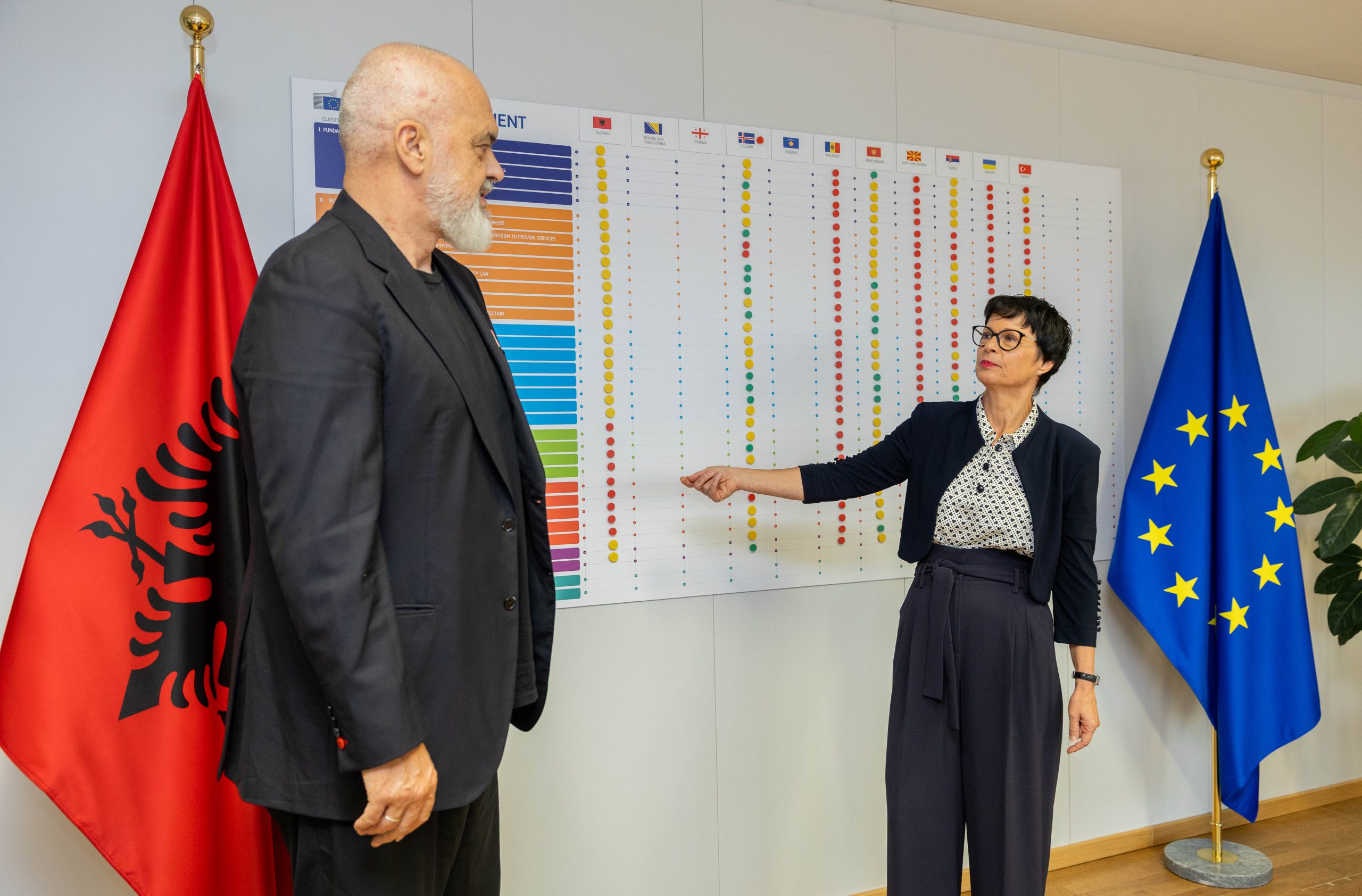Nowhere are the contradictions of Serbian self-proclaimed military neutrality as visible as in the media. While in practice the Serbian Armed Forces and the Ministry of Defence have been cooperating intensively with NATO within the Partnership for Peace framework and with Ohio National Guard in, the impression was made by the media that the Russian and Serbian armies cooperate in the same manner. This was best seen in October, on the eve of the arrival of the long-awaited MiGs exactly on the anniversary of the liberation of Belgrade. Russian airplanes, which, nevertheless, arrived half-rounded, were handed to President Aleksandar Vučić personally by the Defence Minister Sergei Shoigu, who took part in the celebration.
At the gathering, one could hear a plethora of beautiful words about the fraternal relations between the Red Army and the Partisans (whose ideological positions got lost once they began being referred to as the Russian and Serbian armies) and the future of even more intense military cooperation. This year’s Russian-Belarusian-Serbian military exercise “Slovene Fraternity 2017”, with its name bearing many connotations, was sent in the same pompous manner (imagine that the Germans, Norwegians and the Dutch call a joint exercise “German Fraternity”). In addition, the media, directly or indirectly controlled by the Serbian authorities (and there is quite a number of these) have been publishing for many years, on a daily basis, peans of praise to the Russian military equipment (a typical title: “A new Putin’s rocket instilled fear among the Americans”) and the victories of the Russian army in Syria.
At the same time, examples of military cooperation with NATO members, bilateral or within the Alliance, have so far encountered difficulties to find their way to the public. The joint exercise of the Special Anti-terrorist Unit (SAJ) of the Ministry of Interior of Serbia and the US “Deltas”, held earlier this fall, has been carefully ignored in the Serbian media, as well as many other similar activities. The accession of Serbia (in September) to the HELBROC fight group, formed under the auspices of the European Union, consisting of Greece, Romania, Bulgaria, Cyprus and Ukraine, and dominated by NATO members, which some refer to as “Orthodox NATO”, gained similar publicity.
In a wider context, positive content about NATO in recent years was practically impossible to find, while negative, with the mandatory recalling of the “savage bombardment” in 1999, was omnipresent. One could also add to this the spread of the myth of depleted uranium that allegedly permanently polluted the environment and led to the epidemic of cancer across Serbia (although there is no evidence for such a claim) and regular tabloid “unraveling of NATO’s hellish plans” to cause a civil war in Serbia or some similar disaster, and it nevertheless becomes clear why most Serbs think the worst about the Alliance.
The growing role of Russian state media in the Serbian media space should also not be forgotten, especially the one of the Sputnik agency and radio. Sputnik itself is not particularly popular, but the content it offers is free and is regularly taken over by leading Serbian media. Sputnik’s comments and analyses systematically warn that too much of Serbia’s EU and NATO accession will lead to the loss of national (Orthodox, Slavic …) identity, or at best to converting Serbs into Western servants.
That the ice floe began to melt could be spotted at the end of the previous month, so to speak as soon as Shoigu turned his back, when Vladimir Đukanović, a deputy of the ruling Serbian Progressive Party (SNS) and a member of the Serbian Parliament delegation to NATO Parliamentary Assembly, gave an interview to the television Pink in which he spoke surprisingly calmly about the North Atlantic Treaty Organization. “We are the only country that has been praised absolutely for its excellent engagement, for its cooperation, for the economy … while other countries, I am talking about countries of the Balkans, have been widely criticised,” Đukanović said about the annual meeting of the Parliamentary Assembly of NATO that has just been held in Bucharest, adding that the Alliance “looks very favourably on Serbia as a partner”. This came as a surprise, even more, because Đukanović has so far been seen within the Serbian Parliament as one of the hardest critics of the West in general, and NATO specifically, whereas “Pink” is, on the other hand, the fist of Vučić’s propaganda machinery. It was, as it turned out, the first swallow to mark the thaw in Belgrade’s media relations with NATO.
Just a few weeks later, on November 15, Vučić left for the Alliance headquarters in Brussels, where he not only saw Secretary-General Jens Stoltenberg but also took part in the meeting of the NATO Council. Contrary to the previous Vučić’s visit from the beginning of this year, this time the event was extensively “covered” in the Serbian media. Vučić and Stoltenberg widely complimented each other during the press conferences: “I would like to thank Stoltenberg and NATO members for maintaining peace and stability in Kosovo and Metohija, primarily KFOR units. The role of NATO in ensuring security and peace for our people, but also for our holy places, is of great importance,” Vučić said, while Stoltenberg recalled that NATO had over a hundred activities each year with Serbia, thus maintaining its full respect for Serbia’s military neutrality.
Following the meeting, another three-day military exercise named a “Double eagle” was held in Batajnica, in which Serbian and the US paratroopers were jointly involved. And it (again, unlike the previous exercise held in the same place) gained maximum publicity. The last section of the exercise was accompanied by Vučić and a number of ministers, followed by the gratifying speeches delivered by the President of Serbia and the US ambassador.
What should be deduced from this sudden change in a conductive media course in relation to NATO? It is first of all important to explain the discrepancy between the current official, essentially conciliatory policy towards NATO, and the way in which the Alliance has been treated by the official and semi-official media, which, as described above, ranged from suspicious to overtly hostile. This media policy was conditioned not only by the desire not to alienate Vučić’s election base, which has been antipathetic to NATO, but also by the desire to lessen Russian fears that Serbia could follow Montenegro’s decision and seek membership in the Alliance.
Russia, however, has been lately intensely pressuring Serbia to move away from NATO or at least establish a balance between the existing cooperation with NATO and the Organization for Collective Security and Cooperation, a kind of mini-version of the Warsaw Pact, consisting of Russia, Belarus, Kazakhstan, Tajikistan , Kyrgyzstan, and Armenia, in which Serbia holds an observer status. This should be added to Moscow’s deepening irritation by Serbian refusal to give the Serbian-Russian Humanitarian Center in Niš a diplomatic status, with the possibility that this center will become a kind of military intelligence checkpoint in the future. Responding to such a pressure, Vučić tries to show his divergence with the West by changing (public) attitude towards NATO. If it is judged by Sputnik’s text about the training of the paratroopers in Batajnica – “The US plan is revealed – Serbia shall jump into NATO without a parachute” – the Russians do not like this change at all.
It remains to be seen for how long the thaw in mutual relations will last and whether the relationship towards NATO will fundamentally change, or it is just another acrobatic jump on a thin wire separating the East from the West. Such an act has been perfectly mastered by Vučić during his five-year reign, so we should have no doubts that many surprises await us until the end of the show.
(Article translated from Serbian by K. Anđelković)


